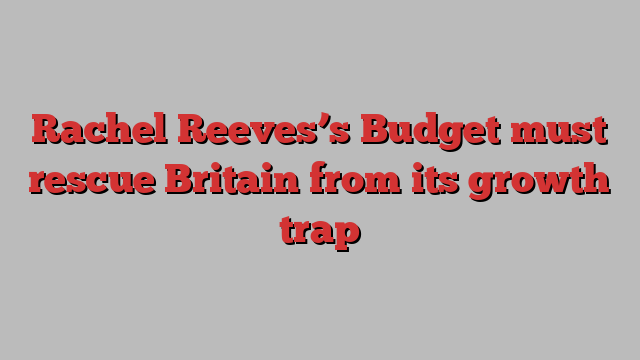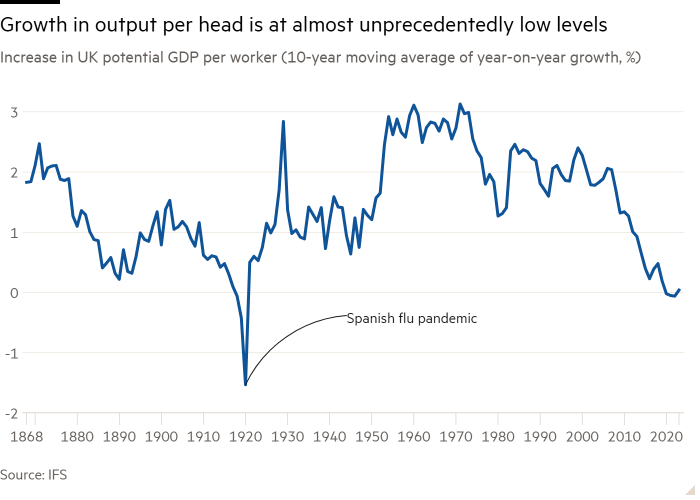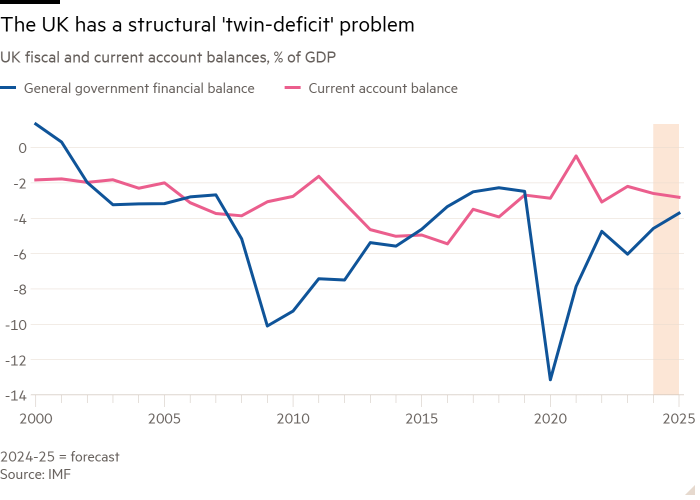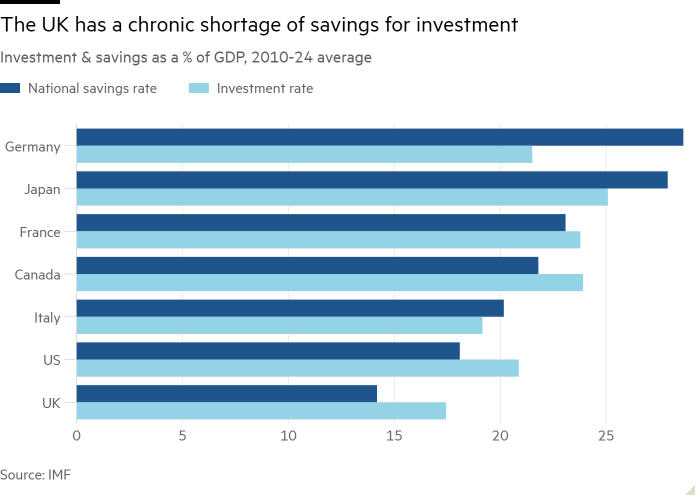
Unlock the Editor’s Digest for free
Roula Khalaf, Editor of the FT, selects her favourite stories in this weekly newsletter.
In her Budget due on October 30, Rachel Reeves, the chancellor of the exchequer, has to achieve four tasks. First and most obviously, she has to give hope to her party and the country that better times are coming. Second, she has to deliver the prospect of improved public services. Third, she must achieve the latter without ignoring the constraints she is under — not just those created by Labour’s promises, but, more significantly, those created by the UK’s vulnerabilities. Fourth and most important, she must offer a credible story on growth. Without that, little will work.
The Green Budget 2024 from the Institute for Fiscal Studies does, as always, illuminate the issues. But the chapter on the economy by Benjamin Nabarro of Citi is especially striking. It notes that “UK economic activity is 36 per cent lower than it would be had it continued to grow in line with its 1997-2008 trend”. The UK’s peers have done badly, too, but not as badly as this: the shortfall in the Eurozone is only 31 per cent, despite its internal financial crisis; and in the US, the shortfall is 24 per cent. Worse, UK GDP is well below even its already poor 2014-19 trajectory. Worst of all, the latest 10-year average of growth in potential GDP per worker is zero, the lowest in one and a half centuries, apart from the short-term impact of the end of the first world war and Spanish flu.

Yes, there is the likelihood of short- to medium-term improvements, provided there are no more big negative shocks. In particular, inflation is coming under control and monetary policy is likely to loosen. But, in the long run, what the government can spend depends overwhelmingly on higher-trend growth. In a stagnant economy, spending more on something means spending less on something else. The politics of such zero-sum choices are horrible. This is a big part of why the last government became so unpopular.
Unfortunately, in trying to deal with the need to accelerate growth while meeting fiscal priorities, the chancellor also has to take account of immediate and structural vulnerabilities. Among the former are that ratios of public debt to GDP are close to 100 per cent and long-term interest rates on gilts are above 4 per cent. Salient among the latter are that the UK has a “twin deficit” problem: it runs fiscal and current account deficits. A larger fiscal deficit is likely to cause even bigger current account deficits and so require a greater net inflow of foreign savings. In sum, the confidence of foreigners matters.

Confidence is unpredictable. It is not dependent on meeting particular magnitudes for deficits and debt. But it does depend on whether the government seems to have a credible plan and the country has stable politics. Here there are also some painful realities. In addition to being structurally dependent on an inflow of foreign savings, the UK does not possess a significant reserve currency: people do not have to hold sterling-denominated assets. Yet the ability to issue debt in one’s own currency is vital for the ability to manage shocks, as has been proved so frequently since 2007. Alas, the behaviour of British politicians over the past decade has not strengthened the UK’s reputation for good sense.
For these reasons and the more fundamental (and related) needs of long-term growth, the Budget has to be multidimensional. Any moves in the direction of more borrowing have to be set in the context of long-term plans for fiscal policy and economic growth. This will require tax reform and higher taxation. But, given the structural external deficits, higher investment will require higher savings, too. The obvious route will be via substantially higher contribution rates for pensions. If savings rates did rise, it would be much easier to fund higher domestic investment.

Above all, given the UK’s low investment and savings rates and the risks created by higher fiscal and external deficits, the government needs to find ways to generate growth that do not rely mainly on higher investment. The obvious possibilities are radical relaxation of planning controls, well-considered deregulation and promotion of innovation. The latter is particularly important, given the dire performance on productivity. The Advanced Research and Invention Agency, promoted by Dominic Cummings, might help. The government also needs to be promoting risk-taking finance for innovation.
The UK has to escape from its low growth trap. Alas, structural weaknesses of the economy will make the escape hard. The test for Reeves is not how she manages the immediate pressures but whether she knows how to get the economy out of this trap. The UK’s future depends on it.
Follow Martin Wolf with myFT and on X